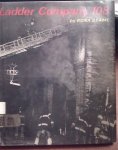- Joined
- May 6, 2010
- Messages
- 17,415
I was a FF in LAD*108 from '68 to '77......when we were still on Siegel St the mandatory interchange started (every 3rd night) plus any night you did 20 runs between 1800 & 2400 you interchanged for the rest of the night tour ......(many runs were discarded in that last hour so we could stay in our own area).....the 1st Co we had for interchange was LAD*128....a few years later it was changed to LAD*115....next it was LAD*136 & the last Co we interchanged w/was LAD*106.......during this period we also were bracketed by TCU*731 operating out of LAD*102 & TCU*732 operating out of ENG*277 (LAD*112 was still on Madison St)......in spite of the TCUs & the interchange we still did around 6,000 runs & plenty of work.....if the interchange & TCUs never existed i wonder what the numbers would have been.....i also feel that if we had not moved from Siegel St to Union Ave in Aug '71 we would have caught a lot more work in Bushwick which was taking off in the early '70s......at the end of the interchange years when we were going to 106 they were actually in the far end of our BN (35) since the 36*BN had been disbanded......many nights we had several hours of work back in our own response area & a call to our friends in the Dispatchers usually resulted in a relocation to the South Bx.

